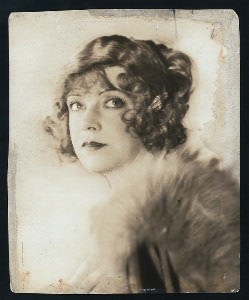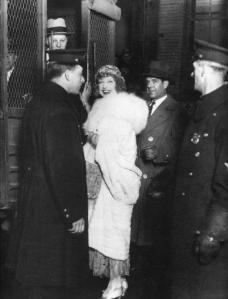 Mary Louise Cecilia Guinan was a born entertainer.
Mary Louise Cecilia Guinan was a born entertainer.
Nicknamed “Texas” after her home state, she got her start in show business as an actress, touring the country with theater groups, rodeos, and vaudeville shows at the turn of the last century.
After a failed marriage, a stint in Hollywood making silent films, and with dreams of stardom, she moved to New York City in 1905. Bubbly and extroverted, she scored roles in musicals and movies.
But her biggest role wasn’t on the stage or screen—it was in one of Prohibition-era New York’s most popular speakeasies.
It happened by accident. After impressing early 1920s crowds with her brassy attitude as a hotel lounge singer, she became the club’s emcee.
She connected well with customers and was hired to emcee at other nightspots—at the Knickerbocker Hotel on 42nd Street, for instance, and a place called the El Fey on West 48th Street.
“Nights at the El Fey, and later at Texas’s other clubs, blended alcohol-fueled mirth and sportive bedlam,” wrote Leo Trachtenberg in City Journal.
 “Armed with a clapper, a police whistle, and her ever-derisive wit, wrapped in ermine, and sporting an array of gigantic hats, Texas impaled big spenders with insults and made them love it.”
“Armed with a clapper, a police whistle, and her ever-derisive wit, wrapped in ermine, and sporting an array of gigantic hats, Texas impaled big spenders with insults and made them love it.”
In 1925, Texas opened the 300 Club, at 151 West 54th Street. John Barrymore, George Gershwin, and Clara Bow were regulars. The club was targeted by officials, who were constantly padlocking the door and arresting Texas.
Her cheeky explanation: patrons brought liquor with them, and that the place was so small, the showgirls were forced to dance close to customers.
The Depression ended the party. Texas went back to acting, and in 1933 while on the road in Vancouver, she contracted dysentery and died at 49.
Mostly forgotten today, the “Queen of the Night Clubs” is immortalized in some Damon Runyon short stories; she’s the basis for the nightclub operator “Miss Missouri Martin.”
In the photo of the El Fay club, two swastikas flank the entrance. They had nothing to do with Nazi Germany; the swastika symbol was a good luck symbol, according to the City Journal article.
Tags: 300 Club speakeasy, famous speakeasies, Mary Louise Cecilia Guinan, New York in the 1920s, Prohibition New York City, speakeasies New York City, Texas Guinan

October 4, 2013 at 12:54 am |
While I never saw a performance by Texas Guinan, I am told her famous salutation to her audience was “Hello Sucker”.
Cheers.
October 4, 2013 at 1:12 am |
Thanks FTA. She also coined “give the little lady a hand.” She was a character.
October 4, 2013 at 6:17 am |
Great piece on a now almost forgotten figure. Texas Guinan was way ahead of her time, a celebrity famous for being a celebrity. No wonder Madonna was interested in portraying her on the screen. One small observation, though. By most accounts, Guinan made no films prior to 1917. And, in any case, moviemaking was not taking place in Hollywood, or Southern California, in any significant way in 1905. Director D.W. Griffith is usually credited with the first film made in Hollywood, “In Old California,” in 1910.
October 4, 2013 at 5:18 pm |
Ah, thanks for the clarification.
October 4, 2013 at 1:26 pm |
My father bought her house on 8th Street in the mid-60’s. The first thing he looked for was the fabled solid gold bathtub that she was supposed to own.
October 4, 2013 at 5:19 pm |
I guess he didn’t find it? Too bad!
October 5, 2013 at 10:04 pm |
I think you mean El Fey Club (owned by Fay) at 105 West 45th St http://theboweryboys.blogspot.ca/2008/07/roaring-twenties-boozy-old-hollywood.html It was Texas Guinan Club on 117 West 48th Street
October 6, 2013 at 12:27 am |
Yes, it’s spelled correctly in the photo.
October 7, 2013 at 12:48 am |
Rumor has it that Whoopi Goldberg’s character on Star Trek, the bartender Guinan, was named after the flapper.